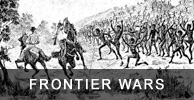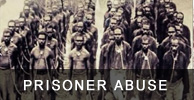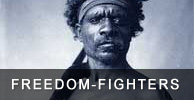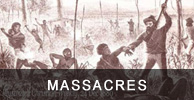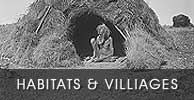Sovereign Union To Shadow ANZAC Day March and highlight the Frontier Wars
Amy McQuire New Matilda 23 April 2014

Ghillar Michael Anderson
The annual gesture is intended to remind Australians about a war many don't realise took place. Amy McQuire reports.
It's the war that Australia doesn't like to remember, but that has never deterred the group of Aboriginal people who have walked behind the official ANZAC Day march in Canberra each year since 2012, calling on the nation to remember the first people who fell in defence of country.
This year the group, which usually numbers between 20 and 60 participants, are preparing to make their mark on the centenary of Gallipoli. They will mobilise at 10:30 am on ANZAC Parade, which bares no trace of the existence of the Aboriginal warriors who died in the Frontier Wars.
Aboriginal leader Michael Anderson, one of the founding members of the Aboriginal Tent Embassy, led the first march in 2012.
He says the Frontier Wars, in which thousands of Aboriginal men and women died defending their traditional lands against European invaders, was much more than an act of aggression. It was "mass murder" and of "war" which deserves to be remembered.
"This is a long way from being called a protest," he told New Matilda. "It is a calling for people never to forget what happened here in Australia."
He says for too long, ANZAC Day has been about "white Australia, not about Aboriginal Australians".
"With the ANZAC memorial, they're saying that people went to work to defend their freedoms, to have a free future. What our people were doing was defending their own future, their own rights to country. They didn't want to be invaded. They were invaded."
"As a consequence of that we must remember the dead and the blood that was shed in defence of the land, just as they argue other wars were in defence of their freedom and their land."
He says the first march in 2012 was emotional, and surprising. The group, numbering nearly 60, walked to the gates of the official ANZAC ceremony at the Australian War Memorial and were shocked at the reception.
"We got to ANZAC Parade, and we marched behind the lot. We stopped at the gates at the top where they have the barriers and it was very emotional. The people who marched had grave reservations about how we would be received," he says.
"Because there were hundreds and hundreds of people there. But to our absolute astonishment and amazement as we marched through the crowd, they clapped.
"It brought tears to everyone's eyes."

He says the first march was one of pride.
"It was led by a bloke by the name of Michael Thorpe who led the march in front by himself. He wore his grandfather's First World War medals and carried a boomerang in one hand.
"He was showing that his grandfather went to war to defend his country. He didn't go to war for the purpose of assisting the British to keep us colonised, but to ensure his freedom and to maintain the freedom of his people."
The Australian War Memorial and successive Australian governments have refused to acknowledge the Frontier Wars, claiming that it would be better served in another institution, like the National War Memorial.
But Mr Anderson said it's time that changed.
"They operate under a statute which creates an interesting position because they only recognise those wars overseas. What we need is for them to make an alternative so they can recognise what happened in this country. We need to have the Australian War Memorial Act changed so they can recognise the legitimacy of what happened in this country.
"It will open a Pandora's box. A lot of people are going to be shocked about the devastation that occurred across this country."
He says there is a need for the Australian War Memorial to support a memorial at every massacre site in Australia. His ancestors were massacred at Hospital Creek, about one hour from Brewarrina in New South Wales, where he says a forensic pathologist found the existence of human bones amongst the dirt.
Mr Anderson has written to Australian War Memorial director Brendan Nelson for a meeting, but has been met with silence.
As the nation commemorates 100 years since the Gallipoli landings, which Mr Anderson calls a "mistake" that resulted in an enormous loss of life defending the British Empire, it is now time to recognise the Aboriginal warriors who fought so hard to defend their own country against colonialists.
"I want this march to be solemn. I want people to remember our dead as well as they remember their dead, and have the same respect for those who went to war. This is not a protest. It's a matter of gaining recognition.
"If we are going to talk about those who died defending this land – Australia – we need o make sure the Aboriginal resistance is recognised in this memorial and throughout."

(National Library of Australia)

Encounter with the Natives at 'the Officer', Musgrave Range [SA and NT border]. 'The Romance of Exploration' A Narrative Compiled from the Journals of Five Exploring Expeditions into and through Central South Australia, and Western Australia, From 1872 to 1876. by Ernest Giles

An illustration of the explorer Charles Sturt's party being "threatened by blacks (sic) at the junction of the Murray and Darling, 1830", near Wentworth, New South Wales. National Library of Australia picture nla.pic-an9025855-1. 'Sturt's party threatened by blacks at the junction of the Murray and Darling, 1830'.

